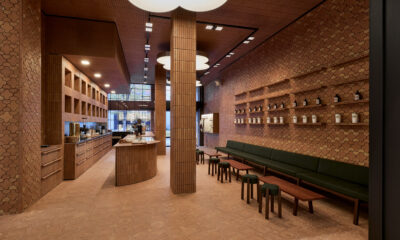It’s stormy January. If you’re living in most parts of the country, you don’t need me to tell you that. My outside thermometer reads 15 degrees – and I’m (technically) in the South.
But I’m not only talking about the storm of plunging temperatures and windy precipitation. I’m also talking about that annual perfect storm this time of year of consequential facts, stats and analysis that retailers – especially the brick-and-mortar kind – have come to dread.
It’s the end of a quarter; more important, the end of the year; and, most important, the end of the season that generates all of the speculations about the strength and stability of the industry.
It’s the time of the year for predictions about the retail cataclysm; the expectations about which names won’t last out the year; all of the black crepe about what another disappointing holiday season it was.
The analytics come whistling at us, through the window frames, like a fresh burst of Canadian air. Fung Global Retail & Technology (New York) helpfully pointed out that there were more than 6800 store closings in 2017 in the U.S., the most in any one year and more than double 2016 numbers. Credit Suisse predicts another wave of bankruptcies and store closings in 2018.
Of course, malls took the brunt of the beating in 2017. Time magazine reported in July that thousands of mall-based stores were slated to close by the end of the year, “many of them the brand-name anchor outlets that real estate developers once stumbled over themselves to court.” Those include the all-too-familiar names: Sears, Macy’s, JCPenney, Kmart.
Advertisement
I got an email from Macy’s this morning. What is this winter being called? The “Bomb Cyclone”? Macy’s wanted to tell me that, “Brrr! It’s the perfect day to shop from your couch!” It probably is, but what about those nearly 700 Macy’s stores that are gobbling up monthly rental payments and electricity bills and hiring a lot of people to stand around? How many of those will be part of the depressing statistics in January 2019?
Perhaps worst of all, The New York Times took a shot at our treasured holiday windows, asking, “How long will they last?”
The article focused on the sale of the Lord & Taylor building on Fifth Avenue in New York. “My first reaction was alarm,” wrote James B. Stewart. “What would happen to the Lord & Taylor Christmas windows?”
Alarm, to be sure. Those windows always resonated with me, as well, evoking memories of an annual trip to midtown with my kids to get some hot chocolate from the Childs café across the street, then line up with hundreds of others behind a rope just to file by those wonderful, intricately designed and produced little tableaux.
Stewart reported that there was no rope this year, and no line.
But hold the alarm for just a moment. I don’t want to be all Polyanna, but there’s something resilient about physical shopping. Else why would so many pure-play digital brands open their own stores? Why would Walmart be investing so much to improve its store experiences? (Yes, Walmart even used the “E” word!)
Advertisement
Those experiences that are capturing so much attention throughout the retail world may be, in part, last gasps to save that real estate investment as the winter winds whistle through the corridors of empty malls right now. But I think they’re onto something. These brands are full of interactivity and technology, because that’s how we live right now. But, in the best cases, they’re also full of services, entertainment, information, demonstrations, tutorials and classes – person-to-person, with eye contact and conversation – that people find they still love and need.
Leigh Ann Tischler, the windows director for Bloomingdale’s, told me recently that the industry’s biggest challenge is “to get people looking up from their devices and see what we have to offer.”
That’s what this industry’s best, most creative minds are up to these days, while the C-suite tries to keep its anxious stockholders warm.
As a journalist, writer, editor and commentator, Steve Kaufman has been watching the store design industry for 20-plus years. He has seen the business cycle through retailtainment, minimalism, category killers, big boxes, pop-ups, custom stores, global roll-outs, international sourcing, interactive kiosks, the emergence of China, the various definitions of “branding” and Amazon.com. He has reported on the rise of brand concept shops, the demise of brand concept shops and the resurgence of brand concept shops. He has been an eyewitness to the reality that nothing stays the same, except the retailer-shopper relationship.


 Headlines2 weeks ago
Headlines2 weeks ago
 Headlines7 days ago
Headlines7 days ago
 John Ryan1 week ago
John Ryan1 week ago
 Headlines2 weeks ago
Headlines2 weeks ago
 Headlines1 week ago
Headlines1 week ago
 Headlines1 week ago
Headlines1 week ago
 Hospitality2 weeks ago
Hospitality2 weeks ago
 Headlines4 days ago
Headlines4 days ago















